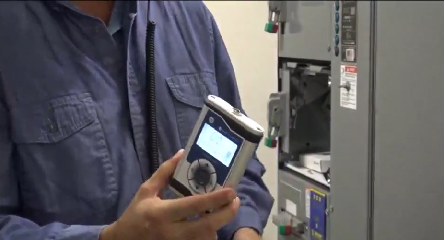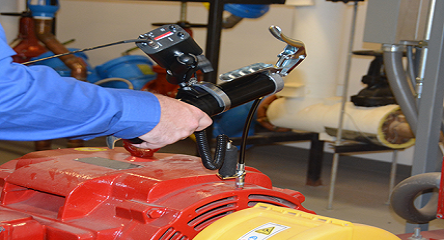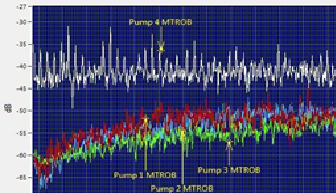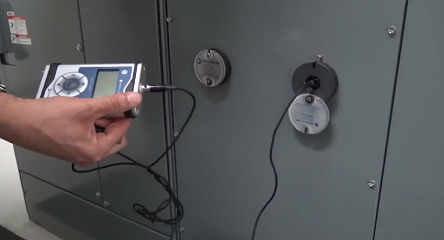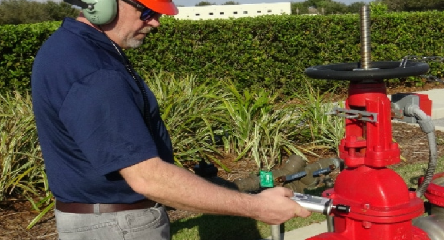The Power of Two: Infrared and Ultrasound CBM Technologies
Condition based monitoring (CBM), or the maintenance process where the condition or “health” of a machine is monitored for the earliest signs of impending failure, is how thousands of plants worldwide are saving billions of dollars annually. Early prediction of machine illness is essential in reducing energy waste and eliminating downtime while increasing production output as well as asset availability. Establishing an effective predictive maintenance program that utilizes powerful and accurate technologies such as ultrasound and infrared enables maximum profitability through the ability to see and hear areas of concern we never could before – with precise, timely results, granting an enormous advantage over standard predictive maintenance practices.
The Combined Power:
Condition based monitoring is nothing new to the industry. Today, every company is utilizing at least one system for inspecting potential problems within plant operations. What is relatively new to the industry, however, is using the combined power of multiple technologies such as ultrasound and infrared.
Since we were born, we have been taught that if you can’t see it or hear it, it is not there. Through ultrasound and infrared, we are able to eliminate this idea from our minds and extend our senses and creative problem solving through technologies that have been developed to see and hear everything we can’t.
Combining ultrasound and infrared testing methods is the safest and most un-intrusive way of testing that allows inspectors to easily see, hear and record areas of concern that have been difficult to detect before, extending the ability to accurately diagnose all areas of potential failure within a plant environment.
Combined, infrared thermal imaging and ultrasound can be used with a wide range of equipment and plant operations, including aircraft inspection, bearing and mechanical inspection, electrical inspection, electric arc flash, steam trap testing and maintenance, bearing condition, rubbing conditions, pumps/motors, lack of lubrication, steam traps, switchgears, transformers, relays, bus bars, substation electrical inspections, electrical distribution systems, electric motor inspections, refinery process line insulation loss or leak detection, heat exchanger quality and efficiency evaluations, HVAC equipment evaluations, and even pest infestation inspections. These are only a few.
The point is clear: nearly any industry, especially plant conditions, can benefit from the using both ultrasound and infrared technologies. It’s a power that can predict failures in machines before they become unmanageable – detecting weak spots, leaks, worn bearings, overheating of electrical equipment and machinery, and much more.
For all industries taking advantage of combined predictive intelligence, the benefit is that machine failure can be effectively managed before its run to death through the detection technology that is most appropriate for the application. When a machine is inspected using the wrong detection instrumentation, the possibility looms that potential problems will go unnoticed, allowing equipment to perform until it reaches meltdown. Often this damage is far more involved than it would have been if spotted and handled at its earliest warning stage using either ultrasound or infrared. In fact, costs can inflate to as much as 5 to 40 times higher after machine failure. The loss of profits is also significantly higher when downtime extends over the course of days, as well as statistics for energy waste, transportation, and steel, which have all risen 4 to 20 percent over the past years.
Safety issues present an entirely different perspective on predictive maintenance. Death ratios are estimated at 42 percent as a result of explosions, 14 percent from fires and burns, and 13 percent from poisoning – numbers that could drastically decline with accurate predictive maintenance, as seen in plants that use combined predictive maintenance, reporting statistics below the average in all categories, as well as higher profit margins.
Integrated Ultrasound and Infrared – the Power of Two
Chuck Peterson, president and owner of PPM, “Peterson’s Predictive Maintenance”, saw the opportunity that these combined resources had to offer, and started his company focusing on its benefits in 2001. Peterson’s company promotes predictive maintenance practices and equipment, and hosts educational seminars that teach techniques. Six years after its inception, Peterson has proven to be correct in his estimates for the potential of combined CBM, saving industry leading corporations hundreds of thousands of dollars annually.
During Ultrasound World III, the nation’s premier conference focused on ultrasound inspection technology, Peterson was invited to speak about the integration of ultrasound and infrared technologies. His theories about energy conservation and monetary savings have brought him clients such as Boeing, Kroeger, and Abengoa. He also supports training operations in infrared for roughly 25 hospitals in Kansas.
Peterson cites several examples of how these combined technologies can help to significantly reduce the potential for failure in most plant applications, saving companies days or sometimes weeks in downtime. Some of these studies include the following:
Detection of Bearing Failure
It is a fact that inboard bearing failure is certain. Specific to motors, most run hot due to an overload from bearing drag – likely caused by over greased bearings. Infrared thermal imaging will show immediate signs of the motor being over greased while ultrasound can identify the exact problem and determine how much grease to apply to a motor. After detecting the problem via infrared and then listening to the bad bearing via ultrasound, inspectors can ensure that the motor runs cool and has even heat inboard to outboard – making sure the center of the motor is the only part of the machine that is warm, thus eliminating over heating and pending failure.
Misalignments
As is often the case during inspection, several machines may appear to be running fine. However, when checked closely you may notice quite a bit of vibration or other causes of alarm. Infrared inspection may show a bad misalignment, indicating inboard bearings are hot and the center of the coupler is showing heat where it should not be warm at all. After this problem is detected with infrared, ultrasound could quickly hear the problem in both inboard bearings. This allows inspectors to immediately act on the concern with the justification that both detection tools found fault within the system.
From loose or dirty connections where an infrared camera can detect areas of concern through heat discoloration while ultrasound hears arcing in the loose connection, to loose fuse clips where ultrasound tracks the looseness of the fuse and infrared can detect that the fuse clips have lost tension or where the wire on the fuse appears loose, both technologies complement each other in several ways – helping inspectors determine the most appropriate next steps, whether trending and reporting over time or immediate part adjustment or replacement.
Case Studies:
Chevron USA, Perth Amboy NJ, has six to eight thousand steam traps throughout the plant. The plant generates close to 500,000 lb/hr of steam. A steam trap audit with ultrasound and infrared revealed the trap failure rate was up to 28%. Because of this discovery, the refinery has increased its steam trap reliability by 15% within two years after ultrasound technology was put into use as a complement to infrared. The reduction in steam losses is saving at least $50,000 a month.
As another example of how these technologies complement one another, Peterson notes that when a large plant he worked with shut down for an afternoon, they used a regular stethoscope and picked up a bearing noise in a machine running at low speed. The housing they listened to contained two bearings at a cost of $1,500 each. Their stethoscope could not determine which bearing were going bad. With the plant back in operation the next day, and all other machinery running, they used ultrasound in combination with infrared to check the machine in question while running at top speed. Ultrasound identified the front bearing as being the culprit while the back bearing was okay. Infrared thermal imaging acknowledged the same problem through discoloration in the bearing due to heat. They immediately replaced only the front bearing at a cost of $1,500, and were back into production much sooner than they would have been had they replaced both bearings.
Another interesting example of combined CBM via ultrasound and infrared is noted by Peterson through one of the largest construction companies in the southwestern United States. This company currently uses ultrasound to check the hydraulic systems on earth-moving equipment, tower cranes, etc., while utilizing infrared to gauge any faults with all of its pumps and motors. Recently, ten minutes of predictive maintenance prevented the destruction of two pumps worth $2,000 each by indicating over lubrication of bearings within the motors. This diagnosis saved the company a number of potential losses: two or three days of downtime, the cost of eight hours of maintenance time (at overtime rates), air freight charges to fly in new pumps, and even the possibility of a penalty for the delay in completing the project.
Avoid Potential Catastrophes with Infrared and Ultrasound
By combining these two technologies, plant managers can easily and quickly avoid potential catastrophic events while maintaining the most efficient plant operations possible. As advanced warnings of potential danger, decreased production, and downtime, both ultrasound and infrared offer quality and accurate diagnoses to ensure productivity, safety, and profitability – enabling plants to remain one step ahead of the potential for failure at all times.
Going Green – the Color of Monetary Anti-Waste:
Billions of dollars are lost every year in total energy waste. In fact, last year it was estimated that $3.2 billion dollars were lost due to poor energy conservation through compressed air leaks alone. Another way of relating that figure, and what most companies don’t realize, is the total profit loss from compressed air leaks can amount to 40% of their electric bill. A large percentage of that can be saved and utilized as company profit with the combined technology of ultrasound and infrared.
There is yet another upside to the use of ultrasound and infrared technologies. It’s a way for organizations to “go green”. In addition to the benefit of monetary increase, the conservation of energy is a global health necessity, especially now with the political upheaval that is stirring in regards to global warming. By utilizing the combined technologies of ultrasound and infrared, there is a significant energy waste decline, which is an environmental effort to control the amount of wasted fuels, and to control the conditions that are presenting themselves as alarming hazards.


